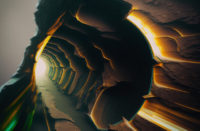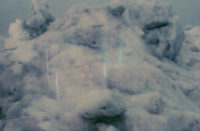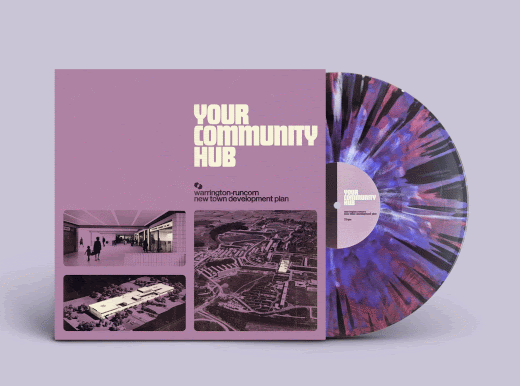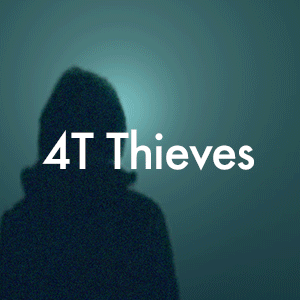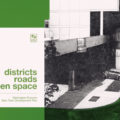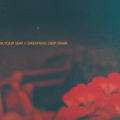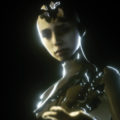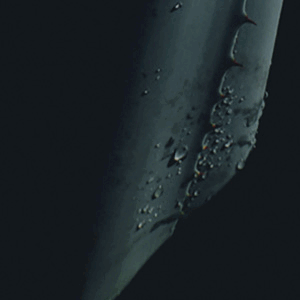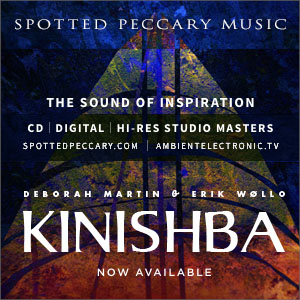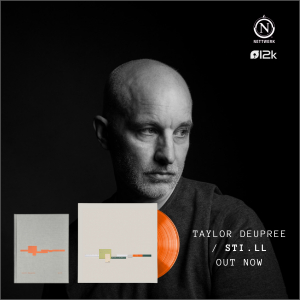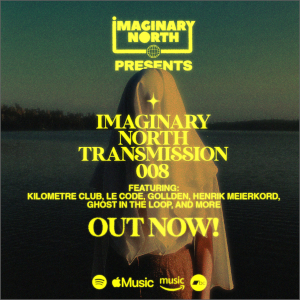Your Community Hub is a great take on a classic style of electronic music. While it’d be easy to discredit this LP as just rehashed old techniques, the execution is what ultimately sets it apart, so much so that if this style happened to resuscitate in a couple years to come, Warrington-Runcorn New Town Development Plan would be one of the names to hail, and remember—and I promise—it’s not that challenging to do so.
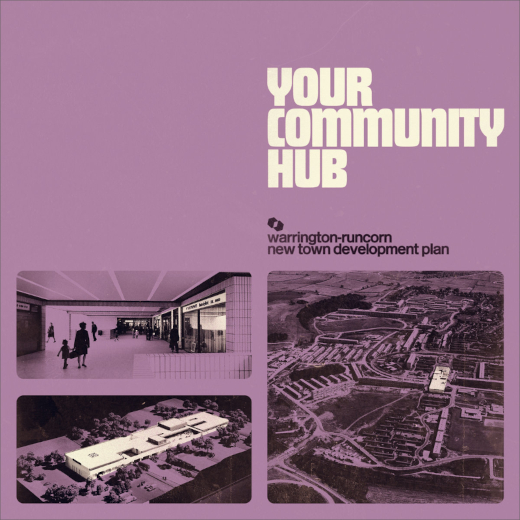
A welcoming futuristic soundscape
A record rooted in classic progressive electronica, from its synth textures to its compositional style, Your Community Hub is a fantastic modern resurgence of this style. Warrington-Runcorn New Town Development Plan creates a welcoming futuristic soundscape, one in which the synthesizers shine with their especially lovely timbres. Gordon Chapman-Fox seems to be using—or is at least trying to recreate—vintage synthesizers, which not only contribute to this LP having that classic ’70s appeal to it, but also make it sound just as futuristic and as grand as those classic albums used to.
Comparisons can only help so much though, because, in a way, Your Community Hub ends up outclassing records from that era, given that it is masterfully composed; the dynamics are impeccably smooth when they’re a key component, making a great use of space—alongside top-notch mixing—to make these pieces feel as enveloping as they can be. Other times, the LP has a far less structured approach to lean more into ambience, but even then, it always manages to create an interesting atmosphere.
The opening track, “A Shared Sense of Purpose,” falls into the first of those two categories. This track isn’t simply an outstanding opener, it’s also a piece so great and so memorable that it rivals the aforementioned ’70s classics, like your Oxygène or Autobahn, in terms of iconic-ness; that is no exaggeration, this track is seriously that damn memorable and enjoyable. The main reason is due to its lead melody; a very straightforward arpeggiated lead that works so well thanks to its simplicity and immediacy. The fact that it opens up the whole record—and that it does so completely by itself—also makes it immediately stick in your head, plus all the variations it goes through make it interesting as well, not just catchy. Said variations also never veer away from its core melody. It’s as if it took a slight turn only to immediately go back to its original line, making these alterations not excessive as the core melody always ends up coming back to seep in your head. The way it echoes in the left and right stereo channels is also an absolute pleasure as it creates a sort of call and response given how the right channel features far less movement, giving the impression that it’s sometimes trying to latch onto the melody in the left channel instead.
As fantastic as this lead melody and its subtle accompaniment are, “A Shared Sense of Purpose” doesn’t solely work, thanks to that. There is, indeed, some nicely layered progression, a progression in which every newcomer seems to be fitting a role that was missing. You get some big and ethereal chords first, and I love how they always come in twos, the first in the left channel and the second in the right, as that adds another reoccurring element you can always expect, making the track even more immersive. A deeper tone joins shortly after, and I love how it’s not just there to fill in the lower registers, it also constantly shifts, smoothly going up and down in volume in a continuous motion; this fulfills the purpose of dynamics I mentioned at the beginning, as this bass sticks out far more that way, making it yet another vital component to this track’s bewitching atmosphere. Even more layers are added in the second half, percussion makes its way in as well to really make the track complete, and needless to say, every addition contributes to this piece’s slick and grand sense of modernity.
The streak continues with “Rapid Transport Links,” another stellar track. In true ’70s fashion, it features a prog rock inspired bassline à la Roger Waters which helps the track keep momentum for its first two minutes. Only then is it ready to open up, introducing another bassline that is so warm and round it makes the first act more as percussion as they play together. This first boom is only a hint though, as the track pulls off this climax a couple more times, each being greater than the previous; the second time this added bass comes in, it does so with another synthesizer, which instead provides some spacious pads, making this second climax more satisfying. The third time around a beat also comes in, and I absolutely love they way it’s introduced, because the first snare that appears does not come on the 1, so for the first beat you think it’s the same loop repeating yet again to only shortly after be caught off guard by this bright accent on the 2; it’s a great way to suddenly shake up this track’s predictability, as you’re still able to settle into this new groove very quickly due to how little has actually changed. There is also a fourth big moment in this track, as a final melody makes its way in in the last portion, and I really love this addition too: it feels like it’s the only truly melodic component of the piece, yet it’s so sparse and delicate that it does not change the feel of what’s been established up until that point.
“Cul-de-Sac” is yet another highlight, a track that is more focused on ambience instead of progression, and one that, for that same reason, caught me a bit off guard initially. I didn’t like how the two very exciting previous tracks flowed into “Cul-de-Sac,” a very anticlimactic follow up by comparison; however, I’ve very much warmed up to its atmosphere, because this piece is just as magical as its two predecessors, even if not meant to be as exciting. Though there is no real explosive moment throughout this piece, its progression is still fantastic, there’s both variations and additions to its looped parts that make it more than just a breezy ambient piece; this alone keeps the track’s amazing hypnotic atmosphere well alive, but to that add all the layering the piece amasses as it goes on and it eventually goes from hypnotizing to really immersive. The melodies presented here are just as magical as the ones in “A Shared Sense of Purpose,” but are far more delicate, they’re clearly not trying to be catchy or act as some sort of motif, which is very much appropriate to settle as great of an atmosphere as the one this track offers.
Yet another immersive track ::
“Facilities for All Ages” and “Pedestrian Shopping Deck” also experiment more with atmosphere, but I don’t find either to be particularly impressive, as their progression is almost too linear and stiff for their own good. They’re not bad pieces by any means, but also fail to stick out in the tracklist, as they don’t offer anything particularly new or done in a new way in comparison with the previous tracks. Still, “Facilities for All Ages” does have one of the best arpeggiated leads on the album, making it yet another immersive track.
The ending is far better, given that “A New Town With an Old Sense of Community” is another highlight. I especially like how the percussion utilized here is more of a core component to the piece, it doesn’t get added to shake things up or to climax like it was in previous tracks, here the drums create a foundation for the rest of the piece to develop on; it does border techno for certain aspects, but the choice of the drums themselves does still very much call back to a lot of early experimentation with industrial aesthetics in the ’70s. All of this track’s components sound great, and as each one gets added the piece gets better and better. Even if doesn’t pull any spectacular tricks like other tracks, all of its elements are so solid that adding more and more makes the track a great closer overall.
As a whole, Your Community Hub is a great take on a classic style of electronic music. While it’d be easy to discredit this LP as just rehashed old techniques, the execution is what ultimately sets it apart, so much so that if this style happened to resuscitate in a couple years to come, Warrington-Runcorn New Town Development Plan would be one of the names to hail, and remember—and I promise—it’s not that challenging to do so.
Music and sleeve design by Gordon Chapman-Fox.
Mastered by Antony Ryan at RedRedPaw.
Illustrations by Michael Cooke.
Original photos and drawings provided by Richard Garvin, from the archive of architect Peter Garvin.
Your Community Hub is available on Castles In Space. [Bandcamp]






